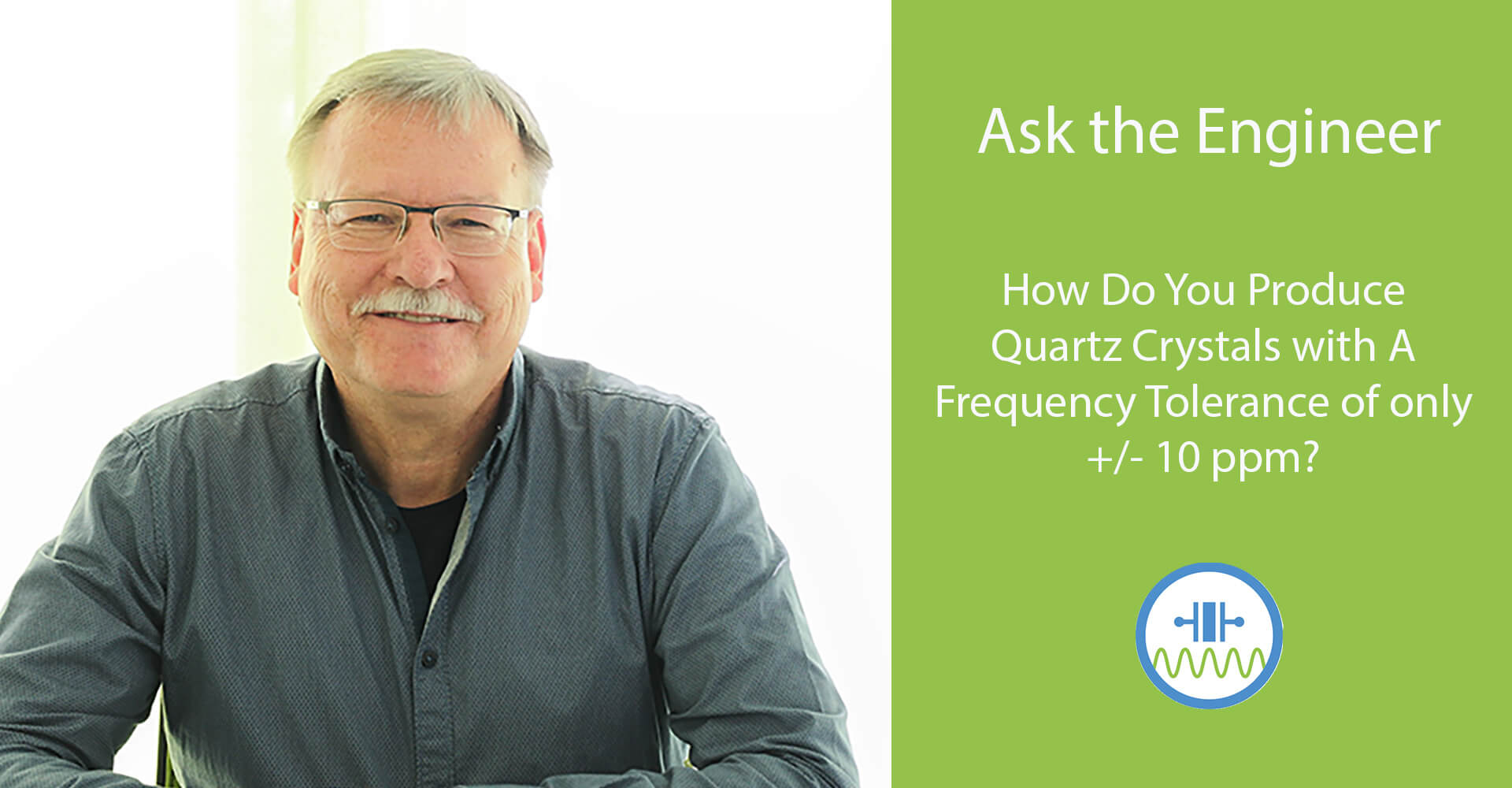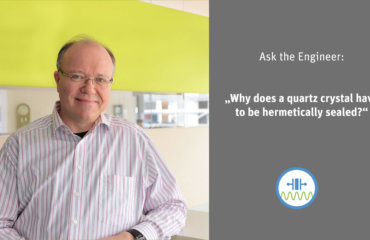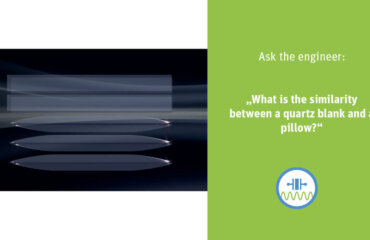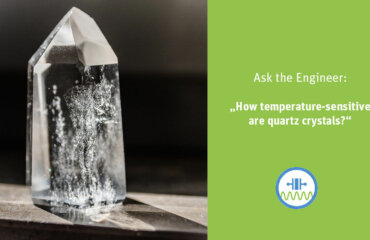
Basic tone crystals with high frequencies are in great demand, especially for wireless applications in the Internet of Things industry. More and more often we find devices communicating with each other and exchanging data via radio, for example via Bluetooth, ZigBee or ISM. All these radio standards use frequency bands in the three-digit megahertz or gigahertz range. To generate these RF frequencies, the devices require very precise reference crystals with frequencies in the range from about 20 to 52 megahertz.
Requirements in the Wireless Industry: Ultra-Thin and Highly Precise
Quartz crystals with such a high resonant frequency must be ultra-thin. The thicker the quartz, the lower its frequency and the less suitable it is for wireless applications.
A whole series of production steps are necessary to produce sufficiently thin quartz discs. The raw crystal block is gradually divided into ever smaller units. The smallest unit is ultimately the “blank”, which is sawn, ground, etched and polished to produce the correct thickness and a particularly smooth surface. For example, to produce a quartz blank with a resonant frequency of 40 megahertz, the quartz disk must have a thickness of only 41.5 micrometers.
Due to its nominal frequency of 40 megahertz, this quartz disk would already be ideally suited for use in wireless applications; but it’s not that simple. In addition to the quite high nominal frequency, a minimum error tolerance in the ppm range (ppm = parts per million) is required. Such high precision is necessary because the radio frequencies of the individual channels are very close to each other, especially in the high-frequency range. If you want to avoid an overlapping of the different radio frequencies, you must ensure the lowest frequency tolerance of the underlying reference frequency.
This poses a challenge for crystal production, which can be illustrated using the example of the 40-megahertz crystal. As mentioned above, the quartz disc ideally has a nominal thickness of exactly 41.5 micrometers. With a target error tolerance of only +/-10 ppm, the actual value may deviate from this ideal value by a maximum of +/- 0.415 nanometers. This is less than a millionth of a millimeter.
Such an accuracy in the sub-nanometer range cannot be achieved by mechanical production steps alone. Quartz manufacturers react to this problem by producing their crystals minimally too thick or too thin from the outset, depending on the properties of the production plant. The crystals are then fine-tuned to achieve the desired nominal frequency.
Fine Tuning: Post-Evaporation or Ion Bombardment
One of the last processing steps in quartz production is the application of an electrode on both sides of the quartz disc. This electrode is necessary to electrically excite the oscillation of the blank. At the same time, this electrode is also the starting point for the following two processes for fine-tuning the quartz.
1) Post Evaporation / Sputtering:
To be able to use the post-evaporation process – also called “sputtering” – the quartz disc is manufactured slightly too thin, so that even after the electrode has been applied, the resonance frequency is minimally too high. To correct this, the quartz electrode is evaporated with silver. In this way, an ultra-thin layer of silver is applied, which increases the mass of the quartz and lowers its frequency. During the process, the frequency of the quartz disc is continuously measured. If the desired nominal frequency is reached, the post-evaporation is stopped immediately.
2) Adjustment by Ion Bombardment
The prerequisite of the quartz disc produced slightly too thick means even after the electrode has been applied, the resonance frequency is still slightly too low. In this case, the mass of the electrode is reduced by targeted bombardment with ions of sufficiently high energy. By reducing the mass, the frequency increases continuously. As with sputtering, the frequency is monitored throughout the entire process. The process ends as soon as the desired nominal frequency is reached.
Jauch Crystals for All Wireless Applications
Thanks to these two fine-tuning processes, ultra-thin and high precision crystals can be manufactured for a wide variety of wireless applications. The Jauch JXS 21 and JXS 22 models are also produced in this way. Available in the frequency range from 16 to 52 megahertz, with a fault tolerance of only +/-10 ppm and particularly high frequency stability, these crystals are specially designed for use in wireless devices. Learn more about our quartz crystals.


 Deutsch
Deutsch 



